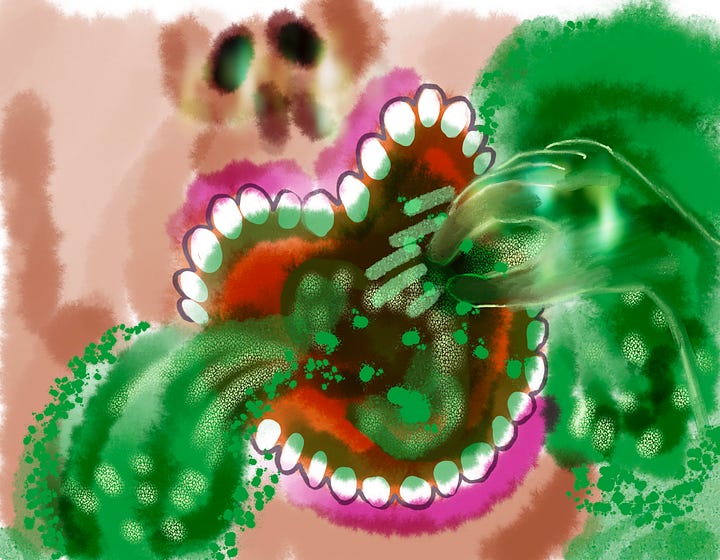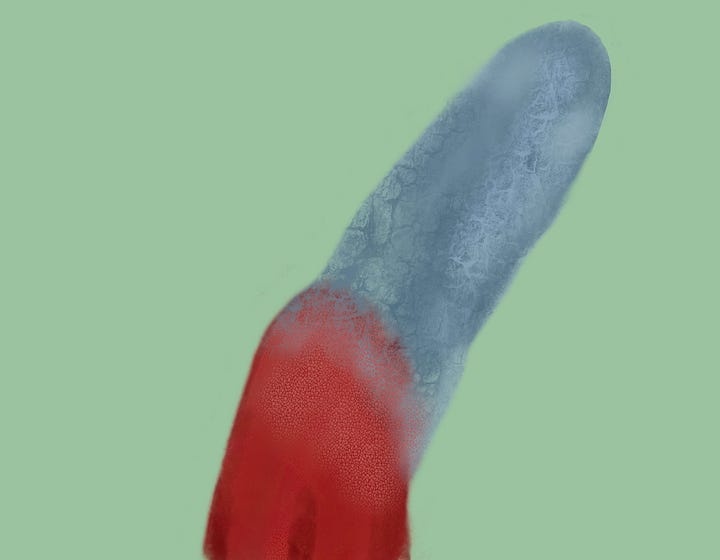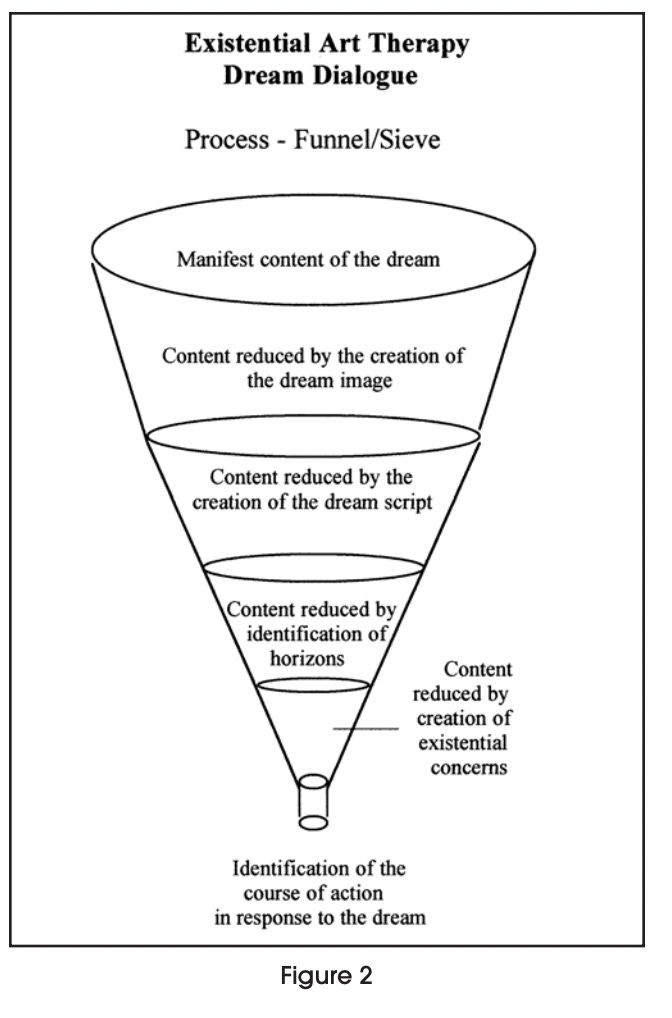Existential Art Therapy Dream Interpretation: I am shedding
Embark on a journey of self-discovery as we decode the symbolic landscapes of recurring dreams, revealing the transformative power of shedding past selves and embracing the elasticity of change.


Fig. 1 The Film, iPad Procreate Digital Painting. ©Theresa Slater 2023
Fig. 2 The Shedding, iPad Procreate Digital Painting. ©Theresa Slater 2023
I used Moustaka's Existential Model of Interpretation of Dreams for my journal.[1] First, I created an image [fig. 1] of a reoccurring dream I was desperate to un-code. The image is of a large mouth with a textured green substance spewing from it. There is a hand covered in the substance, pinching it. Then, I wrote a script for the dream. In my dream, I am trying to remove some film from my mouth. I scrape my tongue with my fingertips and nails, but the substance is very resistant and tacky. It has the consistency of silly putty. I am frantic, and I can’t talk. I pull and throw the substance to the ground, but more appears in its place. Reflecting on the image and the script, I recognize the key elements or horizons of the dream as re-occurrence, resistance, and removal. Next, I amplify the pre-existing concerns expressed in horizons. I see a re-occurrence in the pattern of the teeth and imagine that I have not accurately received the intended subconscious message of the dream. I see resistance in the implied motion of the hand, which means a personal block or struggle to do shadow work. I see removal in the green outside my mouth, making me think of cleansing and elimination. From this clustering of horizons, I understood my statement of existential concern: I cannot eliminate my exiled parts. Now I get it. My dream has evolved since these revelations; I dreamt in first person that from my tongue, I pulled off snake skin; my tongue shed endlessly [fig. 2]. My course of action was to create a response image and do the Moustaka process again. The horizons for the new iteration of the dream are shedding, elasticity, and first-person perspective. Shedding is a transformative process of out-growing your past self. In the image, the shed skin is aged and textured. Elasticity makes me think of neuroplasticity; change is possible but relative. This is illustrated by the shed skin still attached to the tongue. The image necessitates it is the viewer’s tongue; this first-person perspective confirms I am embodied and Self-led. My statement of concern has transformed, too; I am endlessly out-growing my exiles. I am a very active dreamer, and this process has uncovered symbolic meaning for a reoccurring nightmare I have had for most of my adult life.
What visual elements would you include if you were to illustrate a recurring dream?
What techniques do you use to capture the essence of your dreams?
[1] Moon, B. L. (2007). Dialoguing with Dreams in Existential Art Therapy, Art Therapy: Journal of the American Art Therapy Association, 24:3, 128-133.




